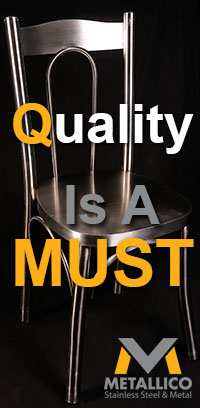The Amazing Story of Stainless Steel
RUST which, it is estimated, causes a loss of about one billion dollars a year in this age of steel, today is in full retreat before an advance that began about a generation ago. Strangely enough, the big guns of war played a key part in the early stages of the battle.
The history of man’s attempt to conquer rust goes back almost to the time when the first iron tool was fashioned. The most important chapters, however, have been written since the beginning of the present century.

Today, as the result of the struggles, we have stainless steel, wonder alloy that promises to work amazing changes in almost every activity involving steel, particularly the automotive and aviation industries.
The story of present-day rust-resisting steel alloys really began in 1912 and a number of men have had a part in the research. Elwood Haynes of Kokomo, Ind., in an attempt to make spark-plug points that would not corrode and pit, melted iron with nickel, cobalt and chromium. He came very close indeed to a great discovery. Five years later, at the great Krupp works in Germany, Benno Strauss poked about among alloys of iron, nickel and chromium, trying to find a material from which he could make better tubes for pyrometers used in measuring very high temperatures.
Here and there, during the next decade, experimenters tried combinations of the three important metals now found in stainless steels in attempts to make such things as scale-resisting castings and alloys that would withstand the cutting action of the oxyacetylene flame. Mixing iron with chromium was not new, for chromium steel made in crucibles had been in use since 1869 for manufacturing locks, crusher parts and burglarproof safes.
But it remained for Harry Brearley, head of a steel company research laboratory at Sheffield, England, to stumble onto the most important property of iron-chromium combinations, their resistance to corrosion. Brearley was trying to find a better metal for lining the bores of big guns. The life of such guns, ordnance officials complained, was too short, largely because of the action of heat and corrosion on the bore. The heat developed in firing a single shot was, in large-caliber guns, high enough to melt a thin film of the metal then being used. In addition, the corrosive action of chemical products of explosions attacked the bore.
Brearley knew that a steel that does not contain much carbon cannot be melted as easily as one having a high percentage. By reducing the carbon in the gun-lining steel, he ought to raise the melting point. But something had to be done to retain the hardness. He knew chromium-iron alloys were hard, and stood up well against heat. So he mixed iron and chromium in various proportions, put them through all kinds of tests but could not produce a gun lining that would meet all the requirements.











